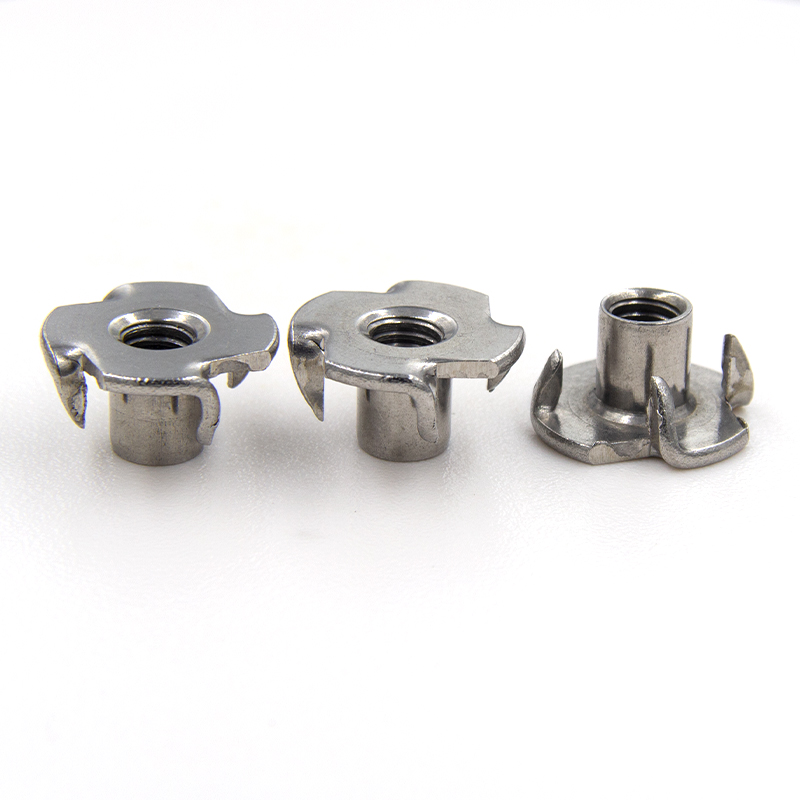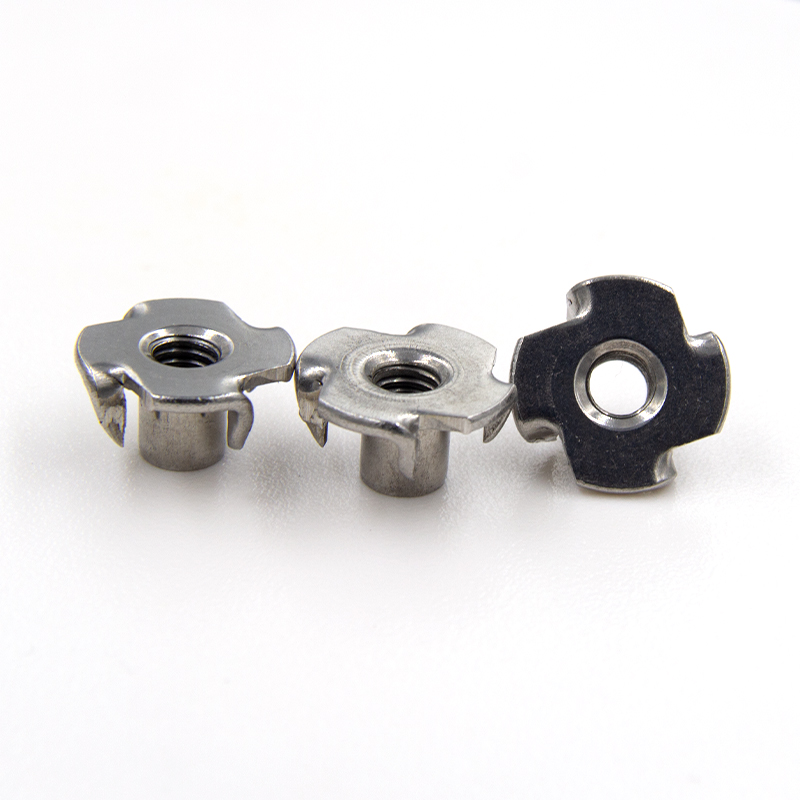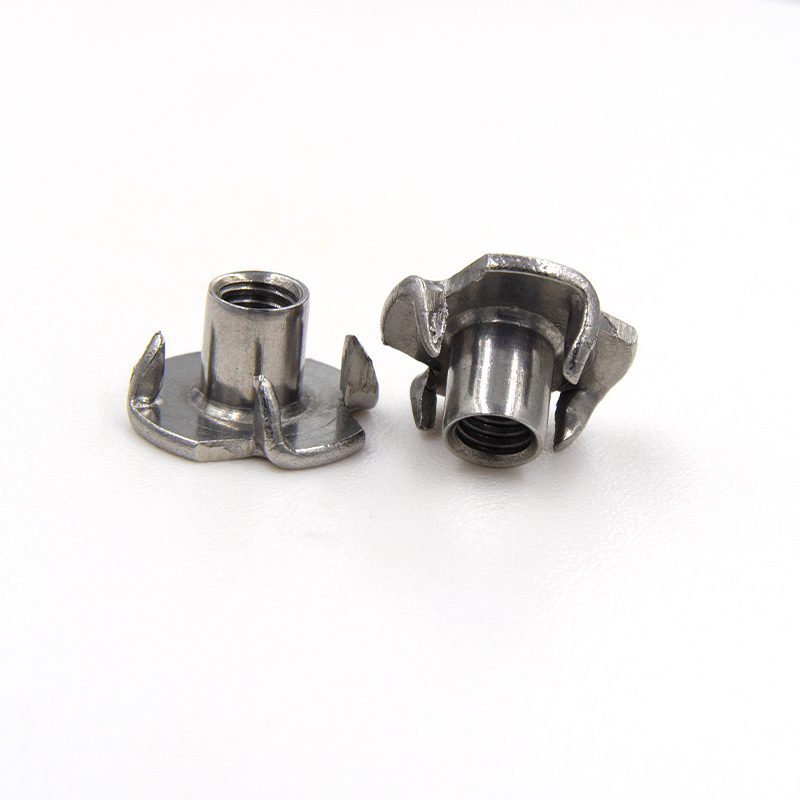Usage Scenarios of Four-Claw Nuts
1. High-Vibration Environments
Due to their superior anti-loosening performance, four-claw nuts are commonly used in high-vibration environments. For example, in automotive engines, transmissions, and chassis, continuous vibrations during vehicle operation can cause ordinary nuts to loosen. Four-claw nuts effectively prevent this, ensuring stable operation of the equipment.

2. High-Load Applications
Four-claw nuts are widely used in machinery and equipment that must withstand significant loads. For instance, in construction machinery, heavy-duty trucks, and wind turbines, these nuts can handle substantial axial and radial forces, preventing loosening or detachment of connected components under high loads.
3. Aerospace Industry
The aerospace industry demands extremely high reliability from fasteners. Four-claw nuts are often used in critical areas such as aircraft engines, wings, and landing gear due to their excellent anti-loosening performance and fatigue resistance. They ensure safety and reliability under extreme operating conditions.
4. Railway and Transportation
In railway and transportation systems, four-claw nuts are widely used in track connections, vehicle chassis, and bogies. The intense vibrations and impacts generated during train operation can cause fasteners to loosen, but four-claw nuts maintain secure connections, ensuring safe and stable train operation.
5. Industrial Equipment
Four-claw nuts are also commonly used in industrial equipment that requires frequent disassembly and reassembly. For example, in machine tools, pumps, and compressors, they provide reliable fastening while minimizing thread damage during disassembly, extending the equipment's service life.
Methods for Using Four-Claw Nuts
1. Selecting the Appropriate Four-Claw Nut
Before using a four-claw nut, it is essential to choose the right nut based on the application. Factors such as size, material, and strength grade should match the requirements of the fastened components. For example, high-strength materials should be selected for high-load applications, while corrosion-resistant materials are suitable for corrosive environments.
2. Cleaning the Threads
Before installation, ensure that the threads of both the bolt and nut are clean and free of debris. Dirt, oil, or rust on the threads can affect the fastening performance and potentially damage the threads. Use a dedicated thread cleaner or wire brush for cleaning.

3. Proper Installation
When installing a four-claw nut, use appropriate tools (e.g., wrenches or torque wrenches) to screw it onto the bolt. Ensure the nut and bolt threads are aligned during installation to avoid cross-threading or thread damage. The four-claw design creates resistance during installation, which is normal and ensures anti-loosening performance.
4. Applying the Correct Torque
Apply the appropriate torque when tightening the four-claw nut. Excessive torque can damage the nut or bolt, while insufficient torque may not achieve the desired anti-loosening effect. Use a torque wrench and follow the manufacturer's recommended torque values for optimal fastening.
5. Regular Inspection
In high-vibration or high-load environments, four-claw nuts should be inspected and maintained regularly. Check for signs of loosening, wear, or corrosion. If any issues are found, re-tighten or replace the nut promptly.
6. Disassembly Considerations
When disassembling a four-claw nut, use the appropriate tools and avoid excessive force to prevent thread damage. If the nut is difficult to remove due to prolonged use, apply lubricant or use heat to assist in removal. After disassembly, inspect the threads and clean or repair them if necessary.
Advantages and Limitations of Four-Claw Nuts
1. Advantages
Superior Anti-Loosening Performance: The four-claw design ensures stable fastening even in high-vibration environments.
High Fatigue Resistance: Four-claw nuts can withstand repeated vibrations and loads without fatigue failure.
Ease of Installation and Disassembly: They are relatively easy to install and remove, with minimal thread damage.

2. Limitations
Higher Cost: Four-claw nuts are more expensive to manufacture and purchase compared to standard nuts.
Limited Application Scope: They are primarily used in high-vibration and high-load scenarios, where ordinary nuts may not suffice.
Conclusion
Four-claw nuts are high-performance fasteners widely used in high-vibration and high-load applications, such as automotive manufacturing, aerospace, and railway transportation. Their unique four-claw design provides excellent anti-loosening performance and fatigue resistance, ensuring the safe operation of equipment under extreme conditions. When using four-claw nuts, it is crucial to select the appropriate specifications, install them correctly, apply the proper torque, and conduct regular inspections and maintenance to ensure long-term stability. Despite their higher cost, the reliability and safety they offer in critical applications make them indispensable fasteners.
